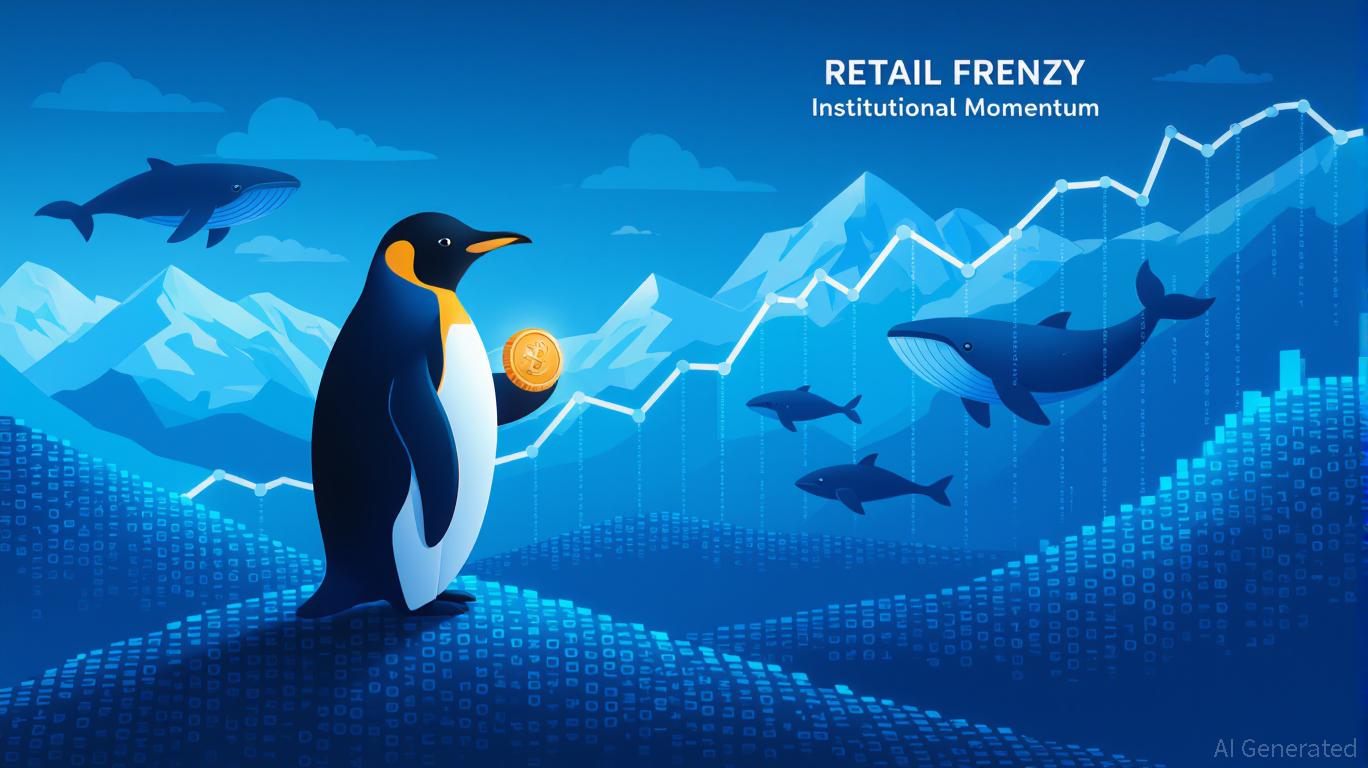Bitcoin Updates: Abu Dhabi's Investment in Bitcoin Grows Threefold as the UAE Adopts a Digital Gold Approach
- Abu Dhabi's ADIC triples Bitcoin ETF stake to $518M, positioning UAE as top sovereign holder via U.S. ETFs. - Strategic shift from oil revenue to "digital gold" coincides with BTC's $86,600 level and $238M ETF inflow reversal. - Analysts flag $88,000 as critical resistance for bullish momentum, while XRP traders profit from November rebounds. - Institutional/retail dynamics shape BTC's outlook, with 4-year cycle risks and $90,000 threshold defining near-term direction.
Bitcoin's latest price movements have sparked fresh interest as both institutional investors and market experts assess its direction in an unpredictable environment. During the third quarter of 2025, the Abu Dhabi Investment Council (ADIC) increased its holdings in BlackRock's
These ETF investments have occurred as Bitcoin attempts to overcome significant resistance points.
Institutional trust in digital assets is not limited to ETFs.
The dynamic between institutional and retail participants is influencing Bitcoin's short-term prospects. While ETF inflows and the S&P 500's current position—just 2% below its all-time high—point to market strength, there are still risks to the downside.
Disclaimer: The content of this article solely reflects the author's opinion and does not represent the platform in any capacity. This article is not intended to serve as a reference for making investment decisions.
You may also like
The Psychological Factors Influencing Retail Investors’ Actions in Cryptocurrency Markets
- Crypto markets are shaped by behavioral finance, where retail investors drive volatility through FOMO, herd behavior, and overconfidence. - The PENGU token exemplifies this dynamic, surging 480% in July 2025 but plummeting 28.5% by October due to emotional trading cycles. - Social media amplifies emotional contagion, with traders checking prices 14.5 times daily, while financial literacy mitigates bias susceptibility. - Personality traits like neuroticism increase cognitive biases, and speculative narrat

Bitcoin News Today: Bitcoin's Unstable Holiday Periods Hide Average Gains of 6%
- Bitcoin's Thanksgiving-to-Christmas performance shows equal odds of rising or falling, with a 6% average seasonal return despite volatility. - Historical extremes include a 50% 2020 rally and 2022's 3.62% drop post-FTX collapse, amid a $2.49-to-$91,600 long-term surge since 2011. - 2025's $91,600 price reflects ongoing recovery from 2024's $95,531 peak, with institutional crypto adoption and macroeconomic factors shaping future trajectories. - Analysts advise dollar-cost averaging for retail investors, w

Australia Strikes a Balance Between Fostering Crypto Innovation and Safeguarding Investors with Updated Regulations
- Australia introduces 2025 Digital Assets Framework Bill to regulate crypto platforms under ASIC, creating "digital asset platform" and "tokenized custody platform" licenses. - The framework mandates custody standards, transparency requirements, and lighter regulations for small operators (<$5k per customer) to balance innovation with investor protection. - Global alignment with UAE and EU crypto regulations is emphasized, while addressing risks from past failures like FTX through stricter enforcement and

PENGU Token's Latest Price Fluctuations and Blockchain Indicators: An Analytical Perspective on Technical Factors and Institutional Activity
- PENGU token's recent volatility and on-chain activity spark debate over institutional involvement in the crypto market. - Technical indicators show conflicting signals: overbought RSI vs. positive MACD/OBV momentum since November 2025. - Whale accumulation and Solana integration suggest strategic buying, while team wallet outflows highlight market uncertainty. - Social media sentiment drives short-term price swings, but structural risks like tokenomics and regulatory ambiguity persist. - Institutional ad
